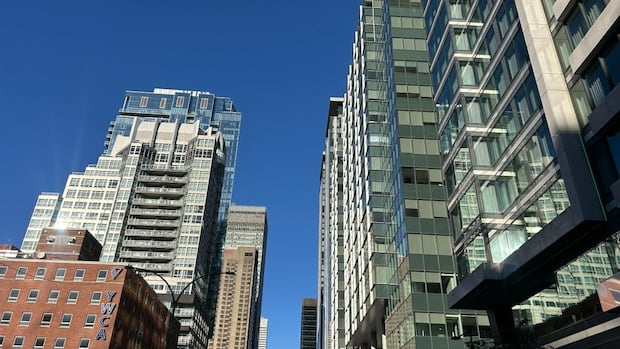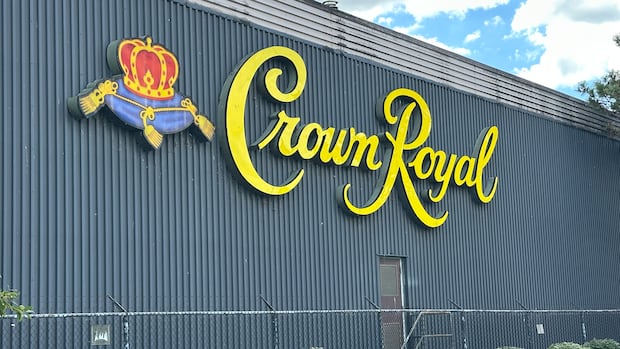As the Montreal area grapples with a housing shortage, development battles are playing out across the region — in vacant lots, natural areas and stretches of waterfront once considered untouchable.
From a protected forest in the West Island to green space on Nun’s Island, proposals for new construction are meeting local resistance.
With demand for housing surging, the next wave of municipal leaders will face pressure to balance urgent development needs with calls for environmental protection — as well as pushback from residents wary of change in their neighbourhoods.
In Pointe-Claire, some residents are opposed to plans to build on a patch of forest just west of Fairview Mall, near a new light-rail station set to open next spring.
The 16-hectare site is once again a flashpoint in the suburb’s upcoming municipal election.
“We would like to have the forest protected in its entirety,” said Sandra Maki, spokesperson for Save Fairview Forest, a local environmental group.
Instead of clearing trees, the group is urging developers to consider reworking the Fairview Mall site or its vast parking lot.
“If we look at the overall benefit, you know, we can save the forest, protect the citizens and their quality of life and develop nearby,” Maki said.
Democracy, development and delay
Similar debates are playing out across Montreal and its suburbs.
“Part of that is the reality of democracy, and we celebrate that,” said Kevin Manaugh, an associate professor in McGill’s geography and environment departments. But, he added, there are trade-offs to this process as municipalities try to build more housing.
“Most of the cities in Canada are lacking housing and are lacking affordable housing and need more housing,” he said. “We want park space, we want open space, we want commercial areas, we want forests and waterfront — and we need housing.”
In some cases, a small number of residents have blocked housing projects that require a zoning change via a referendum — though the Quebec government has given local governments the power to override these in certain cases.
The Quebec government held consultations over the summer over how to balance this citizen right with the urgent need for more housing. Another round of consultations is scheduled for this fall.
This is Montreal20:30Should neighbours be able to block housing projects? The Quebec government is asking
New housing developments, especially highrises that require zoning changes, can draw opposition from residents, in some cases leading to referendums on whether the projects can go ahead. While some argue referendums amount to NIMBYism during a housing crisis, others argue citizens should have the power to block projects that don’t meet neighbourhood needs.
Battles over a high-rise in Westmount
In the meantime, debates persist. In Westmount, last month city council approved a controversial development plan that would add four 20-storey residential towers near the western edge of downtown.
Many residents spoke out against the plan, arguing it doesn’t reflect the city’s heritage character and that the proposed 500-square-foot units aren’t suitable for families.
Conrad Peart, an architect who is running for re-election as councillor, expressed reservations about the plan but voted in favour of it, saying it could be modified by the next council.
He said the site is close to public transit and it’s already surrounded by other high-rise buildings, including the former Montreal Children’s Hospital.
“There’s a screaming need for finding room for housing,” Peart said.
Since municipalities in the province control zoning and permits, they have a lot of power when it comes to building housing. But the type of housing and its location can be influenced by who is elected.
Fears of sprawl on the South Shore
Further afield, on Montreal’s South Shore, an environmental group in Châteauguay is fighting the development of a woodland along Highway 30.
Chantale Payant, who is a member of Boisés et écologie Châteauguay, pushed back against the idea that her group is merely a bunch of NIMBYs — opposed to projects in their “backyard.”
She said the proposed development would only increase urban sprawl and eliminate one of the last forested areas in the community.
Payant, who works at a local food bank, said there is a dire need for more affordable housing closer to public transit.
“We want to build a sustainable community,” she said.
Balancing housing and green space
After a slowdown in 2023 and 2024, the Montreal region finally saw an increase in housing starts in the first half of 2025 — driven largely by new rental units, according to the Canada Mortgage and Housing Corporation (CMHC).
Experts say the city and its suburbs still need more housing, ideally multi-unit buildings suitable for families close to public transit.
While the high cost of construction has slowed some projects, experts say more are sorely needed to meet the demand for housing.
It would be a missed opportunity if there isn’t an increase in density around new REM stations to “attract people who want to use that mode of transport to get into downtown and elsewhere,” Manaugh said.
In Pointe-Claire, Maki believes it’s possible to have a “win-win situation, where we protect the forest and develop nearby at the part that’s already asphalt and protect the quality of life of the citizens and future generations.”







